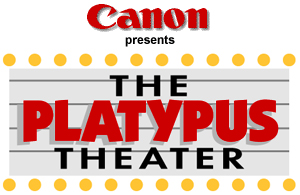 |
→ May 2004 Contents → Platypus Theater
|
 | |
Dust To Dust
May 2004
|
|
In March 2003 millions of viewers worldwide watched on television as the U. S. Army's 3rd Infantry Division fought their way to Baghdad. The news media had been given unprecedented access to front line action through a Pentagon program called "embedding." "Dust to Dust" takes you on a journey with the soldiers of Task Force 2-69, an elite armored unit of the 3rd Infantry Division, as they experience the uncertainty of war, death and dust. The film tells a personal story of what it was like to be an "embed" and presents a war you didn't see on TV. Although my primary commitment was to produce photography for daily newspaper coverage, I planned to produce a film during my "off time," meaning those moments wasted when still coverage is neither viable or possible. Many of us fear a day when we may be required to choose between still and video - or asked to do both. I was not asked to do video. I insisted upon its presence. It is a simple proposition if you think of video as another choice, like which lens to use. It's as simple as raising a second camera to your eye. For instance, I would never use a 200mm lens when I know I need a 20mm. Intimacy with the camera brings knowledge. Combine this philosophy with a primary commitment to still images and the decision about which to use becomes easy. I was never in doubt. For instance, many of the scenes within the film were made at the "end" of the stills. Almost everything in the film has a corresponding still component, some of which were part of the Pulitzer Prize winning portfolio. Correspondingly, "Dust to Dust" was also a finalist for best short film (non-fiction) at the Academy Award qualifying USA Film Festival. The film was augmented with a diary approach that began at 3 am the night before. In those final moments of packing, I shaved my head, shooting my own footage holding the newly purchased Sony PD 10X in one hand and an electric razor in the other. I knew how the film would be constructed before I even left Dallas. Unfortunately the camera succumbed to dust three weeks into the story. I was heartsick and immediately concerned about how I could complete the film. I used the only working camera I had a Canon 1D. I purposely shot "extra footage" for the film with a still camera and pieced the frames together with 1/4 second dissolves to produce an almost dreamlike footage of the war. After more than five months of editing the end result was a film made while shooting still images. We are journalists. We tell truthful stories. How we do it matters little in the end unless hearts are changed.
© David Leeson
Dallas Morning News
|
Back to May 2004 Contents |
|